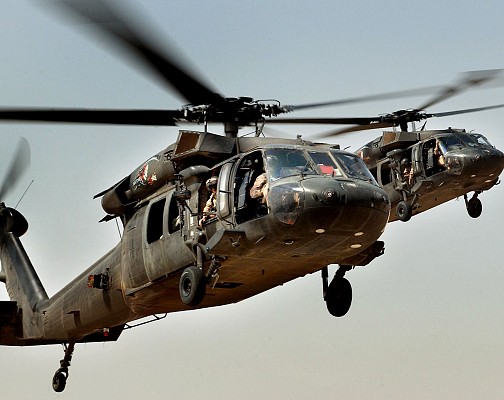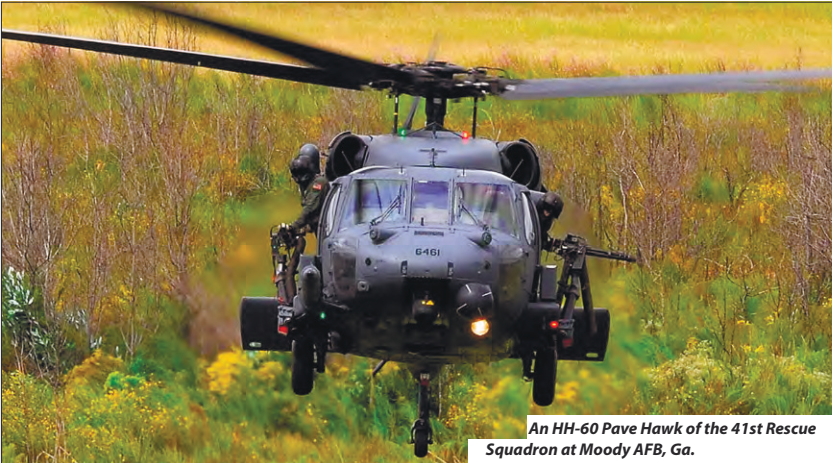UH 60 Helicopter Overview: Key Features and Capabilities for Military Missions
UH 60 Helicopter Overview: Key Features and Capabilities for Military Missions
Blog Article
Discovering the History and Advancement of the UH 60 Helicopter

Origins of the UH-60
The origins of the UH-60 helicopter can be mapped back to the late 1960s, a duration noted by the requirement for a functional utility aircraft that could adapt to the developing needs of modern-day warfare. The U.S. Army identified the requirement for a replacement for the older UH-1 Iroquois, which was ending up being progressively insufficient for the complexities of modern battle situations. In 1967, the Army started the Energy Tactical Transportation Airplane System (UTTAS) program, which sought to create a multi-role helicopter with the ability of various goals, consisting of army transportation, medical evacuation, and logistical assistance.
The UH-60 Black Hawk was presented, showcasing cutting-edge layout aspects and progressed modern technology that established it apart from its predecessors. The UH-60 promptly got recognition for its durable efficiency, dependability, and adaptability, leading the method for its comprehensive usage in armed forces procedures and solidifying its status as a foundation of U.S. Army air travel.
Secret Style Attributes
Ingenious style functions of the UH-60 Black Hawk substantially contribute to its functional performance. One of one of the most significant facets is its twin-engine arrangement, which boosts dependability and offers a greater power-to-weight ratio, allowing the helicopter to carry out under different conditions. The airplane's four-blade main rotor system provides improved lift and ability to move, important for tactical goals.

Additionally, the cockpit is made for optimum presence and comfort designs, including advanced avionics that simplify pilot procedures. The modular style of the UH-60 permits easy upkeep and flexibility, making it ideal for different objective accounts, from troop transportation to medevac operations. These essential layout attributes make sure that the UH-60 Black Hawk remains a flexible and dependable property in army aviation, efficient in meeting the demands of contemporary war.
Technical Innovations
Recent technical developments in the UH-60 Black Hawk have significantly improved its operational abilities and versatility. The integration of sophisticated avionics, such as electronic trip control systems and boosted situational recognition displays, permits pilots to operate with enhanced accuracy and effectiveness. These systems promote improved navigating, interaction, and data sharing, enabling the helicopter to function properly in diverse atmospheres.
In addition, the introduction of composite materials has reduced the overall weight of the airplane while preserving architectural stability. This reduction boosts gas effectiveness and expands functional array. The unification of advanced blades technology, including using four-blade, totally verbalized blades systems, has improved lift performance and maneuverability, permitting for much better handling in different trip problems.

In addition, developments in propulsion systems, such as the T700-GE-701D engines, have actually boosted power result and integrity - uh 60. These engines add to remarkable efficiency in high-altitude and hot-weather problems
Lastly, the assimilation of self-defense systems and boosted sensor packages improves the Black Hawk's survivability and objective efficiency. Jointly, these technical enhancements make sure that the UH-60 Black Hawk continues to be an important asset in contemporary aeronautics, with the ability of adjusting to the advancing needs of humanitarian and military goals.
Duty in Military Operations
As the foundation of united state Army aeronautics, the UH-60 helicopter plays a critical function in various military procedures, offering as a functional platform for fight support, transportation, and medevac objectives - uh 60. Its style incorporates the capability to run in diverse atmospheres, making it vital for army motion and logistical support in both conventional and non-traditional war

In clinical evacuation situations, the UH-60 has actually verified very useful, considerably reducing the time to transport injured soldiers from the combat zone home to clinical centers. Its sophisticated avionics and evening vision capacities better ensure objective success under difficult problems. Overall, the UH-60 helicopter continues to be an essential property, continually adapting to meet the evolving needs of armed forces operations and enhancing the performance of U.S. pressures worldwide.
Future of the UH-60
Looking ahead, the future of the UH-60 helicopter entails significant improvements in innovation and capacities developed to enhance its functional performance. As armed forces procedures progress, the UH-60 is expected to integrate sophisticated technologies, including improved avionics, boosted weapons systems, and advanced interaction tools. These enhancements will certainly permit higher situational awareness and objective flexibility, making certain that the UH-60 remains an essential possession on the combat zone.
One remarkable growth is the integration of fly-by-wire systems, which will improve trip control precision and lower pilot workload. Initiatives to update the airframe and engines aim to raise variety, rate, and payload capability, consequently broadening the helicopter's operational scope.
The future additionally holds assurance for enhanced interoperability with unmanned airborne systems (UAS), enabling worked with objectives that leverage both manned and unmanned abilities. In addition, the consolidation of artificial knowledge and artificial intelligence might maximize trip dynamics and maintenance procedures, leading to lowered operational prices.
Conclusion
The UH-60 Black Hawk helicopter stands for a considerable success in armed forces aviation, progressing from the united state Army's preliminary demands for a versatile utility aircraft. Its cutting-edge layout attributes and next page constant technical advancements have ensured its significance in numerous army operations over the decades. As the demands of modern-day war adjustment, the future of the UH-60 will likely entail more enhancements and adaptations, reinforcing its status as an essential asset for militaries worldwide.
The UH-60 Black Hawk helicopter represents a substantial landmark in army aviation, emerging from the United state Military's pursuit for a more reliable and versatile energy aircraft in the late 20th century.The beginnings of the UH-60 helicopter can be traced back to the late 1960s, a duration marked by the requirement for a functional energy airplane that might adapt to the evolving needs of contemporary warfare. Generally, the UH-60 helicopter remains a crucial property, continually adjusting to fulfill the developing needs of military procedures and enhancing the performance of United state pressures worldwide.
Looking ahead, the future of the UH-60 helicopter involves significant developments in technology and abilities designed to boost view publisher site its functional efficiency.The UH-60 Black Hawk helicopter represents a considerable achievement in army aeronautics, evolving from the United state Military's first needs for a versatile utility airplane.
Report this page